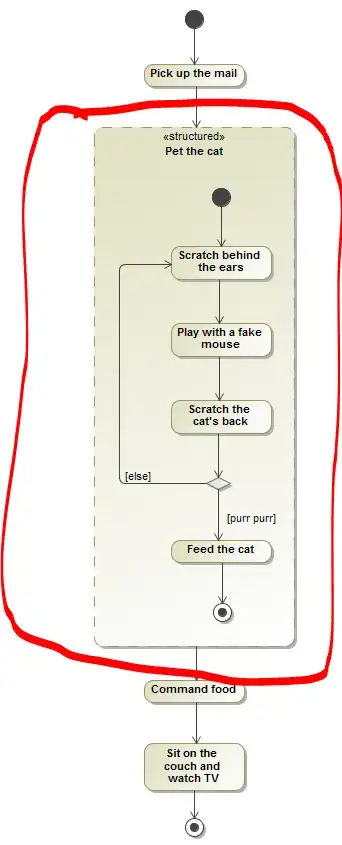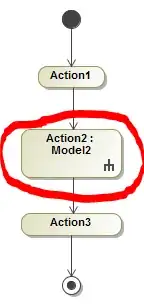This question is very similar to this one, but the answer doesn't match my needs. It's focused on a specific UML tool (Papyrus) whereas my question is more general about UML.
I would like to represent a nested action in an activity diagram, but I don't know what is the common way to do it. The idea is that there is an action of the same scope than the other actions, but more complex in its execution. I would like to show more details about its execution while still being able to show this action at the same level than the others.
On the example below, which is an activity diagram showing some kind of "back home" activity, the nested actions are in the Pet the cat action. Note that there's another potential error in this diagram, see the errata at the end of the question.
I have used the structured node, but I'm not sure it's the correct way, hence the question. In a statechart the equivalent would be a composite state, but I just can't find anything about a composite action. Concerning the structured node, after reading a few documents about it I still don't really get how it's supposed to be used, so I might be totally wrong with this diagram.
I also know that there is the possibility to refer to another sub-activity with the trident symbol, as in the image below, but it doesn't match my needs since I would like the whole information on the same diagram (so I can print it without any loss of information):
So what is the standard way to represent such a nested action? By standard, I mean valid UML, commonly seen and if possible doable on most of the UML design tools.
Unrelated errata : Another thing is wrong in my diagrams, the arrows that come to the same action (Scratch behind the ears) should go to a merging node before to enter the action. See the comments below, including this quote of JOT.

